|
Early in life I knew I wanted to do music. I had dreams of being a conductor. I had wonderful experiences of singing in a community. Some people hide themselves in music but for me it was an experience of who I was being reflected back and also served as a grounding tool. I needed this reflection because after a failed surgery resulted in facial asymmetry, I felt different and was sometimes trapped in that difference. I gravitated to singers who expressed suffering in both their lyrics and voices. Buffe St Marie is a good example, as well as flamenco singers. When listening to them I felt recognized. I needed the grounding that first singing, and then after I lost my singing voice, guitar brought me. I could not do either of these things without being embodied. Playing music brought me out of chronic dissociation and reconnected me with my sense of myself.
When I began to write songs many of them were healing songs: I was talking to myself, re-parenting myself and giving myself a vision of my future. How do we develop our sense of self? Much of the process is a mystery, but attachment processes have a strong influence on how it happens. Our parents and other adults reflect us back to ourselves, we resonate with certain aspects of them and incorporate that into our identity. These incorporated qualities are called ‘self objects’. Our identities are a combination of reflection in, and imitation of, our environments. And genes have a role of course! (as in I am a dark-haired woman) Most everyone recognizes that through attachment processes, parents help us to define who we are. Music, and many other non-human attachments, can also be self objects. How do our favorite songs help us to be more of who we want to be? Mahalia Jackson sings in her song, “I’m gonna live the life I sing about in my song” and repeats it many times. She is talking to herself through the lyric. Repeating words in a melodic phrase locks them into our brain. The song resonates through our lives and helps us to be our self. Many of my lyrics centered around smiles: “Big Smile,” “Don’t Lose That Smile,” and “If I can Smile” are a few titles. This makes sense as I tried to ground myself in a positive view of my unusual smile. It worked—not to change my smile but for me to inhabit my face in a more relaxed way and not be so nervous in social situations. My smile songs helped me become the friendly person that I really was. (as a young adult I often got called standoffish) Recently, in the process of preparing my podcast on this subject, during a havening session where I was strengthening my connection to my ‘self objects’, a song lyric came back to me. It was “Don’t Lose that Smile”. Ironically, I had lost the song and the melody in a spell of depression caused by losing my singing voice and the large part of myself connected to it. Luckily I had the lyric archived and realizing now many years later that it was good I included it in my podcast. During the reading the interviewer started crying and I realized that the lyric didn’t only speak to me but also to others who had lost their smile due to trauma-- physical or emotional. It is always rewarding for a songwriter if their song moves someone to tears and I was inspired. The original melody was gone and I could not find it anywhere but a few days later a melody came to me and for the first time in ages I was singing the song in my head, adjusting lyrics and playing it on my guitar. I had found my smile (music) again. My protest songs were my way to help alleviate suffering—my own and others. My father had been a big protestor (against war and other things) and though I didn’t exactly follow in his footsteps, I felt my songs would ease people’s pain. And sometimes they did. They certainly helped me to stay connected to him after he passed. I am a great admirer of the choral traditions of the world especially represented by the Estonians who used singing protests to help free their country from Soviet occupation. When people sing together it stimulates our Vagus nerve system which is part of our social engagement system and our calming system. I believe and have experienced that when this happens, we become more connected to each other and more kind—more ourselves The documentary, The Singing Revolution describes how they used their strong singing tradition to create unity. The photo above shows that energy. It is my hope that all of us in our own way will use music and singing to become more ourselves, more connected to each other and more caring of our world. Here are the lyrics of ‘Don’t Lose that Smile” Don’t Lose that SmileFor my tiny legs her house was far across the field But she could see my dreams knew they could be real And when I felt as lonely as a seed in the wind She’d open up her arms and bring the sunshine in Chorus You are so beautiful don’t lose that smile When the world turns it’s shoulder let it go by Cry like the rain if it eases your pain But whatever you do don’t lose that smile She revealed a way of following our feet And how to see what is underneath Then she taught us to wonder what lay beyond the stars And what it is that makes our heros who they are Chorus When she read to us each story came to life Then she’d play those keys and we’d sing all night And even though I lacked the usual grace Round her table every person had a place Chorus It’s a way of listening That gets a growing heart to flower That makes a friendship In a few precious hours Chorus Link to podcast interview Early in life I knew I wanted to do music. I had dreams of being a conductor. I had wonderful experiences of singing in a community. Some people hide themselves in music but for me it was an experience of who I was being reflected back and also served as a grounding tool. I needed this reflection because after a failed surgery resulted in facial asymmetry, I felt different and was sometimes trapped in that difference. I gravitated to singers who expressed suffering in both their lyrics and voices. Buffe St Marie is a good example, as well as flamenco singers. When listening to them I felt recognized. I needed the grounding that first singing, and then after I lost my singing voice, guitar brought me. I could not do either of these things without being embodied. Playing music brought me out of chronic dissociation and reconnected me with my sense of myself. When I began to write songs many of them were healing songs: I was talking to myself, re-parenting myself and giving myself a vision of my future. How do we develop our sense of self? Much of the process is a mystery, but attachment processes have a strong influence on how it happens. Our parents and other adults reflect us back to ourselves, we resonate with certain aspects of them and incorporate that into our identity. These incorporated qualities are called ‘self objects’. Our identities are a combination of reflection in, and imitation of, our environments. And genes have a role of course! (as in I am a dark-haired woman) Most everyone recognizes that through attachment processes, parents help us to define who we are. Music, and many other non-human attachments, can also be self objects. How do our favorite songs help us to be more of who we want to be? Mahalia Jackson sings in her song, “I’m gonna live the life I sing about in my song” and repeats it many times. She is talking to herself through the lyric. Repeating words in a melodic phrase locks them into our brain. The song resonates through our lives and helps us to be our self. Many of my lyrics centered around smiles: “Big Smile,” “Don’t Lose That Smile,” and “If I can Smile” are a few titles. This makes sense as I tried to ground myself in a positive view of my unusual smile. It worked—not to change my smile but for me to inhabit my face in a more relaxed way and not be so nervous in social situations. My smile songs helped me become the friendly person that I really was. (as a young adult I often got called standoffish) Recently, in the process of preparing my podcast on this subject, during a havening session where I was strengthening my connection to my ‘self objects’, a song lyric came back to me. It was “Don’t Lose that Smile”. Ironically, I had lost the song and the melody in a spell of depression caused by losing my singing voice and the large part of myself connected to it. Luckily I had the lyric archived and realizing now many years later that it was good I included it in my podcast. During the reading the interviewer started crying and I realized that the lyric didn’t only speak to me but also to others who had lost their smile due to trauma-- physical or emotional. It is always rewarding for a songwriter if their song moves someone to tears and I was inspired. The original melody was gone and I could not find it anywhere but a few days later a melody came to me and for the first time in ages I was singing the song in my head, adjusting lyrics and playing it on my guitar. I had found my smile (music) again. My protest songs were my way to help alleviate suffering—my own and others. My father had been a big protestor (against war and other things) and though I didn’t exactly follow in his footsteps, I felt my songs would ease people’s pain. And sometimes they did. They certainly helped me to stay connected to him after he passed. I am a great admirer of the choral traditions of the world especially represented by the Estonians who used singing protests to help free their country from Soviet occupation. When people sing together it stimulates our Vagus nerve system which is part of our social engagement system and our calming system. I believe and have experienced that when this happens, we become more connected to each other and more kind—more ourselves The documentary, The Singing Revolution describes how they used their strong singing tradition to create unity. The photo above shows that energy. It is my hope that all of us in our own way will use music and singing to become more ourselves, more connected to each other and more caring of our world. Here are the lyrics of ‘Don’t Lose that Smile” Don’t Lose that SmileFor my tiny legs her house was far across the field But she could see my dreams knew they could be real And when I felt as lonely as a seed in the wind She’d open up her arms and bring the sunshine in Chorus You are so beautiful don’t lose that smile When the world turns it’s shoulder let it go by Cry like the rain if it eases your pain But whatever you do don’t lose that smile She revealed a way of following our feet And how to see what is underneath Then she taught us to wonder what lay beyond the stars And what it is that makes our heros who they are Chorus When she read to us each story came to life Then she’d play those keys and we’d sing all night And even though I lacked the usual grace Round her table every person had a place Chorus It’s a way of listening That gets a growing heart to flower That makes a friendship In a few precious hours Chorus Link to podcast https://www.youtube.com/watch?v=m-XDVObpEEI
0 Comments
 The above is a photo of Oregon Grape, a plant that grows in NW Washington state where I grew up. Finding a plant with so many berries and such a vivid coloring of leaves was rare (mostly the leaves and berries were just boring green) and magical. A childhood friend sent me this photo for Christmas and unbeknownst to her I had just born fruit of my own. Through the years she has been present for me at crucial moments so it was appropriate and heart warming to receive this image.
There are many forms of bearing fruit—children, projects, art works--- they are all worthy of celebration. When an accomplishment includes personal growth it has a particularly solid feeling. In early December I was interviewed on Valeria Koopman’s podcast, “The Freedom to Feel”. My topic was “Belonging” and I talked about subjects that my book, Note by Note goes into detail about: Facial difference, hearing disability and learning how to “belong in my body”. Afterwards I felt the glow of accomplishment and the release of energy that comes with changing a pattern. The pattern I was changing was hiding from the world. Even though someone might look at my life and say “Oh you did so many things”, I was actually bound up and blinded by defenses and I rarely felt the peace that can accompany consistent efforts of breaking lifelong patterns. Its been a long journey to fully own my desire to ‘come out’ and contribute to groups through teaching or through music. In watching it I could see why I had resisted being seen---I do look different. At first I felt a little shocked (When I don’t smile in the mirror very much it is easy to hide my difference from myself.) But then I saw my smile on the screen (the expression I resisted so strongly when I was a teen) and how appealing the asymmetry of my face became. Surprise!--the aspect of my face that I thought was the worst actually was the most charming! In my words I could hear the clarity of my thoughts and importance of my experiences and felt sad for all the times I chose not to speak/be seen and how that deprived me and others. There is a lot of talk these days about not compromising your ‘dream’ your ‘self’ but I had always deep down thought that didn’t apply to someone like me with a ‘crooked’ smile. Maybe I need to rethink that and just give what I have to give: bear my own unique fruit. Link to Podcast: https://www.youtube.com/watch?v=wlmfrHGTacQ Reveals the possibility of a deeper connection with ourselves and others“Laughing and Crying it’s the same release” Joni Mitchell Peoples Parties This line struck me as being emotionally true during the time I was learning to cry consciously in my early twenties. Though I am sure I cried as a baby and toddler, up to that point I had been very shut down after a traumatic operation when I was nine. I would cry only if I cut myself. I was uncomfortable with the sound of babies crying. But I had a bad pain in my shoulder that would only release when I cried. I thought this was interesting so I pursued the act of crying using my body pains as an entry point. I would press hard wherever I could reach until I felt the sad feeling and was able to reach a sobbing release. I noticed that after crying I seemed more relaxed and in touch with myself. I was gradually finding my ‘truth’ through the vulnerability of crying. Now I see the Joni Mitchell lyric as being true in a physical way as well. The muscles we use for deep crying and laughing are much the same: the diaphragm, the intercostals between the ribs the throat and facial muscles. Often people will laugh until they cry (a great feeling) Less often people will cry until they laugh. However, if the above muscles are loosened by deep crying, laughter will also become deeper and more easily accessed because we no longer have to hold them tight in the fear of ‘falling apart’. We have already done it and survived. I am grateful that I unlearned fear and shame feelings around the act of crying. Eventually I called my freedom around crying ‘living from the gut’ and felt proud that I had the courage to do it. I tried to teach other people to cry. Sometimes it worked and sometimes it didn’t. What I didn’t know at the time was that humans need to feel a certain level of safety before we can access our grief. Even though I could cry, I often wouldn’t cry about my most vulnerable topics. For example, I was struggling with dissociation from c-ptsd about my voice. (See my book Note by Note for the full story). Because I couldn’t cry or tell anyone, I couldn’t face the truth of exactly what my voice was and wasn’t---even when I was taking lessons. I remember shutting down what could have been valuable feedback from teachers because I just couldn’t face the grief involved in the truth. Now part of my vocal rehabilitation involves making crying type sounds. When I trained in bodywork and later the Havening™ technique--which is a method that promotes safety in the nervous system through self soothing--I observed that during sessions my clients had all the signals of Vagus nerve activation. It is a nerve that helps to increase relaxation responses. These signals were yawning, breathing deeper or swallowing. Often, shortly after this signaling, they would access their sadness and have accompanying insights: “Oh that is what I have been upset about.” Or “So that is what I actually need” I also observed that in the increased safety that comes with relaxing, they resolved their sad feelings quickly and thoroughly and became more socially engaged and cheerful. There are negative aspects of crying. These mainly occur when a person is not socially connected enough. Crying can be problematic when:
Now I watch Korean netflix series. I like them because the writers write characters with vulnerabilities and the actors cry deeply and naturally. Few characters say, “Don’t cry”---they just hug. When I see them I feel comforted too. This is not everyone’s experience. For some people, their own or others’ crying brings tension, anxiety and resistance. If we can cry with someone safe in a safe environment, with our body in a safe state, it activates the social engagement aspect of the Vagus nerve (Ventral Vagal). Also, if someone close invites our crying (makes it safe in an appropriate way) we feel more ourselves with them. The relationship can grow. Another positive aspect of crying is that it releases various muscle and fascia systems: the chest and ribs, the diaphragm the jaw, cheeks and eyes and wherever else we have been storing/resisting the experience of grief. In my book I write, “The key to having a positive grief experience is connection, with self, with others or with spirit. This aspect of connection helps sadness to flow and have its natural peak and resolution. But connection does not mean being intrusive to yourself or the person you are witnessing. The emotion of sadness needs room to breathe---a quietness and non-interference that allows it just to be” My early conception of “living from the gut” if I could cry, has been confirmed many times over watching myself and others come ‘alive’ as they cry, sharing their sorrows and the truths that come with them. Sometimes “Life does life and we must patiently persevere” said a friend recently. I believe this is true and I also believe that sometimes life provides us with ‘trampoline moments’
The few times I have been on a trampoline I had the feeling of being boosted (momentarily) above my life. It was a feeling of freedom from gravity. A laugh burst out---pleasure in releasing the habitual pulls of seriousness. It was a little scary too -- not knowing exactly where I would land. For me, the experience of ‘grace’ is quite similar. There are many definitions of grace most of them connected with God. This is my definition, more akin to synchronicity: A moment in time that has layers of synchronistic influence , feels like it moves me forward, has a connecting influence and helps me to feel/see the bigger picture. It is a rising up sensation I feel especially grateful for moments of grace that bounce me out of a stuck place. For example, if I am ruminating on lonlieness and unexpectedly someone reaches out. Or, I am grumping in my head about a friend and I hear a podcast that loosens my opinion of them. The important thing is to let these moments count, not to go rushing by but take note and add them up. Then I feel lucky! The feeling is the opposite of an obsessive controlling habit that grew out of my PTSD pattern. My close friends call it “the little red hen” in me. Some recent breakthroughs on changing this pattern have been: Being able to intuit what is the best intervention for my body pain (like which exercise) and then not overdoing it. Allowing myself time for pauses to actually listen rather than doing an exercise by rote. Another one was with my book efforts---sending a copy to a small bookstore in the states and then not obsessing about a response. I noticed that I quite awhile later I got an invitation from a small Canadian bookstore owner wanting to have my book in his store. As my book coach says “Be pro-active but then let go of the responsibility of ‘making it happen’ When I release the underlying fear connected with this pattern, I feel the ‘trampoline’ energy. I hope all of you have trampoline moments (or whatever reads as grace or synchronicity) in your life that enrich and calm your being. I have met myself in many of my strengths and my weaknesses, in my uglies and my beauties and in my ‘cans’ and ‘can’ts’ when rising to the various challenges I have chosen, and that life has given me. And, found wonderful things: songs, people, awakenings, humility and much more. But, finding myself on a 10k hike around three peaks at an altitude of 7700 ft, with a variance of 300 meters that took 3 ½ hrs, in 7C temperature with a wind, was definitely a challenge.
I had prepared as much as I could given I was recovering from an odd hip problem connected with chronically straining to hear in noisy circumstances. Due to my long experience with facial paralysis (FP) and hearing disabilities I had learned the importance of preparing but I had never been on a long hike with elevations. I have a fear of heights. I get vertigo in a cold wind. I did not have hiking sticks or enough head covering or sunglasses (thank god there was minimal sun but it was a bright and barren landscape). The starting path was not too difficult and I held my flimsy hood tight around my head as I followed my husband’s footsteps, not able to look at the panoramic views. I felt scared but practised deep steady breathing and talking to myself. Halfway along the path there was a scramble up to the highest point of the hike. I grunted and grabbed for handholds and eventually made it to what is called a ‘hut’ but is actually a large solid building with a restaurant. I was sitting outside the main restaurant eating an apple and a hard Italian cracker, spacing out and hoping my hip would continue pain free for the remainder of the hike. I glanced at the table next to me. There was a group of several men and one woman. The woman was talking about the value of learning stuff from the internet and I noticed that she had facial paralysis. I thought, “How odd to see someone here with a facial disability”. In my entire life I had only met one other person with FP. (recently though, more online). I thought, “I should say hi”. But then I felt shy and somehow unworthy as I had been feeling the whole hike. I sat there frozen. But then when they got up to leave I felt so sad and thought, “I can climb up a mountain but I don’t have the courage to introduce myself to someone like me?” Suddenly I was on my feet following after them and hoping I would not lose them in the crush of people (yes there were a ton of people on this very popular hike) I saw them lingering on a lower level and quickly before the “stop” voice entered my head I introduced myself. Her name was Daphne and we exchanged relevant information—have you had it from birth, what is your diagnosis, have you had any procedures, what is your career etc. It turned out she was a musician too on a break from a cruise ship. It is so rare to meet someone with facial paralysis it is like meeting oneself (though of course there are always differences.) This meeting was especially meaningful because I had been encountering my disability through the challenge of the hike and sinking into what I call disability shame. After I met Daphne that shame evaporated and I felt proud of myself and even though the rest of the hike was hard, I knew I would make it. I had a strong feeling that I had met a new friend and that I was friends with my body again. Accepting my differences and giving myself the right amount of social and physical challenge made me feel worthy to be alive. What is your ‘mountain’? Do you have a way of discerning the right amount of challenge for you?
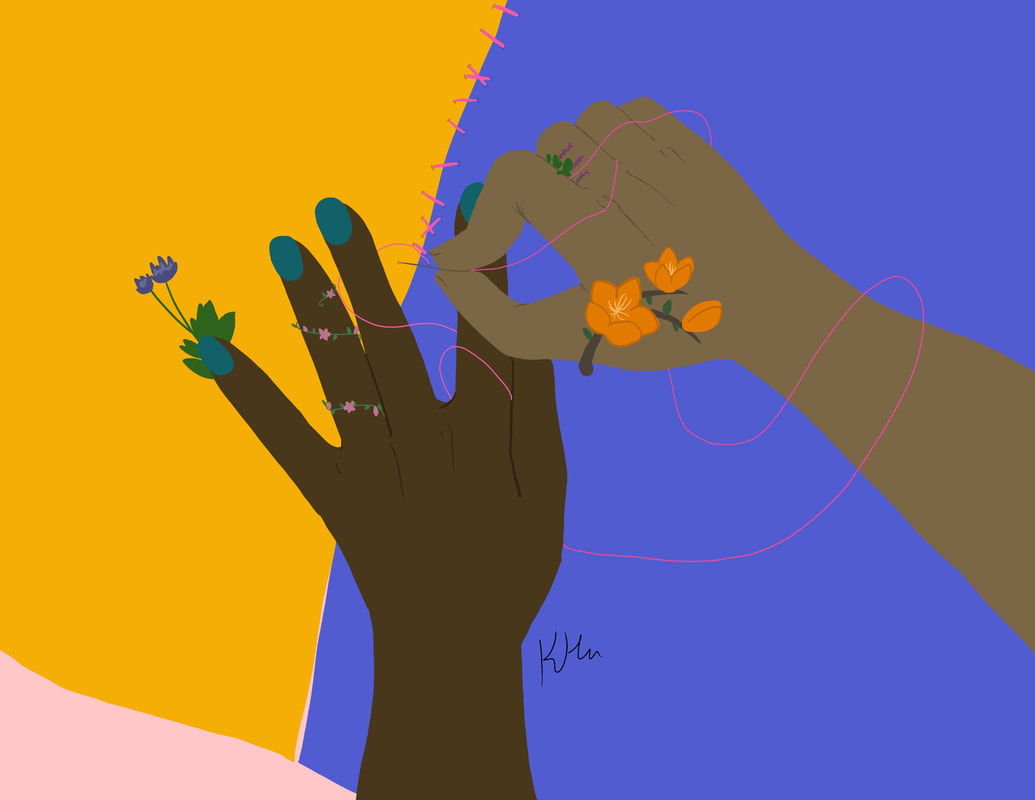 Over the years I have been involved in a number of different styles of resolving relational problems. When I was involved in peer counseling I learned the technique of Non-violent Communication which was a technique that helped me to clean up the attitudes I held and the words I used in order to be less hurtful to other people. In psychodrama the techniques I learned were more complex and thorough. I learned how to identify my ghosts (people from my past that I had projected on the other person) my triggers (events from the past that were unresolved and projected onto the present) I also learned to ‘role reverse’ and take the other persons role (this is very similar to the technique of paraphrasing). I often did a piece of work on the ancestors that turned up before going back to resolving the conflict in the present. More recently, I found a nice technique in a school text book called “Looking In, Looking Out” that I edited and tailored with my knowledge of Sociometry (the study of group dynamics). I have used this frequently in the last ten years and find it effective. (see link below) Of course, if there is not willingness on both people’s part, the effort of resolution or compromise cannot go very far. Human relations are messy. Sometimes it takes years for someone to let go of their grudges and projections. However, I have felt more at peace if I understand and forgive. One path to doing this is a one sided investigation of my own projections and triggers etc. The most difficult ‘forgive’ for me is of people who have not forgiven me. But I have felt the freedom and peace that comes with letting go and understanding so I choose to do the internal work necessary to forgive even this. My world becomes bigger and calmer when I forgive. Holding a grudge (as an unresolved conflict is often called) makes for obsessive thought patterns and is hard on our nervous system—the old memories can generate fight or flight responses and accompanying inflammation. Uncertainty in relationships often triggers attachment issues (does she accept me?) and guilt (I should I should or I shouldn’t). As humans we innately know we need each other---we want to mend our relationships but don’t know how to get beyond our past and our projections to see the ‘other’ as just another human being. This doesn’t mean we shouldn’t argue. We need to discuss our way into a compromise. We must not shut other people down without truly listening. We listen and resolve more often with our intimates—partners, family, friends—but not so much with people outside our tribe. It is possible to disagree without violence (verbal or physical) but if we live in a ‘fight or flight’ state this becomes more difficult because everything feels like survival. The art work above that I commissioned from a teenage artist expresses well the possibility of a Mend. The hands are supportive of each other’s effort. The colors meet each other but stay themselves. The threads connect and the flowers grow beautiful in the peace of cooperation. https://drive.google.com/drive/folders/1yN9QEOSZGhccMTXVNCZhYTTdtqm66U-4?usp=share_link When we are babies we have a gripping reflex that is there for a purpose---to help us eat, discover and grow. This grip is designed to become less prominent as we develop into older children and adults. We learn how to do different things with our hands. However, this grip can emerge unbidden when we are stressed or frightened—in a ‘fight or flight’ state. Also, this ‘gripping state’ can spread to other muscle systems in the body. It’s interesting that when we see someone losing control emotionally we say, “Get a grip” also when we feel frightened of not having control and falling into the chaos of life we say, “I’m losing my grip”. What happens in our body when we are in a gripping state? Flexor muscles over work. These muscles are those that curl our body into a fetal position that pull our hands into a gripping position. When the flexor muscles are overworking they argue with our extensor muscles—those that allow expansive movement and balance the flexion of the ‘survival’ position. When we are over flexed the world becomes a dangerous place simply because we are in a posture that signals danger. The muscle imbalance that follows creates tipping: A posture that tilts left or right, front or back. Pain follows then muscle weakness and collapse. Of course if there is real danger we need to respond to it but many of our body’s ills are from ‘stuck in place’ gripping habits from earlier traumas. For example, dystonia is a muscle disorder rooted in imbalance between extensors and flexors that occurs over time, fueled by the ‘gas pedal’ of the ‘fight or flight’ sympathetic nervous system. The inhibition system in our brains (the brake) grows weak from lack of use. I learned this valuable information from Dr Farias who created the Dystonia recovery program. His teaching confirmed what I was learning from my own body: muscular balancing was of utmost importance in maintaining pain free, smooth movement and a feeling of safety connected to a balanced posture and calm nervous system. But how do we achieve this balance? I believe it starts with learning how to calm our brains enough to observe where our bodies are out of balance— gripping, tipping and collapsing. Often it is useful, and sometimes essential, to have an outside eye to discern where the tight and weak muscles are and where the compensations are (see blog on Compensations or awareness). Changing internal attitudes of self-criticism and self-doubt calms our nervous system. Balance is nourished with physical practices like breathing and exercising. Pausing encourages recovery from energy output and excitement. How can we achieve both effort and effortlessness? What if it could be easy? Words are important to me (always have been) so I want to break down the above concept: How I created it, how I used it and what it means on a deeper level.
The history: Isn’t it curious how words and phrases can lead us through life? How has that worked for you? I coined the phrase ‘Keeping the Body in Mind’ in the early 2000’s before I had recorded my album and written my book. At that time I liked the rhythm of the words and the fact that it addressed body and mind which is what my work has been about for many years. I was a pioneer in bodymind work and having a defining phrase really helped me move forward on an educational front. It sustained me when I was writing the songs for my cd. It became the inspiration and domain name for my first website and workshops I gave. It lead to the phrase in one of my song lyrics on that cd, “Note by Note” that quite a few years later became the title I gave my book. Talk about one thing leading to another! Those two phrases have been behind all my personal healing that has kept my music and writing flowing. The deeper meaning: I use the words, “the body” intentionally because I want to imply something bigger than my body or your body. I want to imply everyone’s body including the earth’s body that we walk on. Using the verb ‘Keeping’ at the beginning of the phrase recognizes that the effort of bringing together body and mind is an ongoing effort. It also means not allowing energy from your bodymind to just disperse or be wasted. As my acupuncturist used to say, “To stay healthy you must ‘keep’ your energy”. What she meant was to think about where my energy was going and make conscious choices, implying that my energy was precious---so many of us need to hear this cue to caring for all parts of ourselves. The phrase “in mind” is tricky because which ‘mind’ am I referring to? Seeing as I have a bit of an obsessive mind I definitely do not want it to be in the part of my mind that says, “You have to be perfect or, Be careful you might make a mistake”. We cannot separate the mind from the body or the brain so I use the words ‘in mind’ in the following way: The medial pre-frontal cortex is the noticing part of the brain and also helps to guide the rest of our brain much like a conductor directs an orchestra. It is the part of the brain that influences the ‘mind’ (all parts of the brain) to have perspective, especially over fear and self-criticalness. I choose this for a definition of ‘in mind’. The graphic above expresses well the feeling of holding and being held. We need this approach to grow a healthy bodymind connection and to do it in a self and ‘other’ loving way that moves us forward. Link to my song ‘Everybody Has the Gift to Heal Themselves’ that conveys the feeling of “Keeping the body in Mind” This was co-written by Debra Alexander and sung by Suzie Vinnick. You can also buy it on itunes https://drive.google.com/file/d/1oU0MmEEPQClpW8gTQPNeDIyDfM6-Oo_8/view?usp=share_link Remember when you are reading this list to put your internal critic outside of you--- maybe far away in an oasis in a desert. And remember not to criticize yourself for being self-critical---just say ooops! And recalibrate towards an atmosphere of self-acceptance.
Having the leftovers of painful events is not your fault (PTSD-- post traumatic stress syndrome). You were doing the best you could to survive/connect at the time. The more standard leftovers are: flashbacks, nightmares, few or no memories and self destructive behaviors such as substance abuse. Those are the ones you see in movies. Some less recognized ones are: numbness, insomnia, loss of a sense of future, loss of interest, loss of sense of “who I am”, chronic pain and feeling ‘out of body’. Some painful feeling states are; hyper vigilance, anxiety and mistrust, shame and worthlessness, irritability and depression and general emotional overwhelm commonly called flooding. There you have it—human beings have been resourceful in finding ways to stay alive even if that life has scars. I have found that the dissociative aspects of PTSD have been the hardest for me to deal with: a de-coloring and narrowing of my life in order to avoid the “no go” zones of activities that might trigger me. Everyone is unique in their patterns but we all have a lot in common too. Learning about my nervous system and its extremes (fight or flight and submit/ freeze) and how it feels to be in the functional zone; what I call the ‘window of possibilities’ (what is often called the window of tolerance) was super important to my growth and healing. There is a lot written about this and I will reference a few resources below. In order to get a solid understanding of what PTSD recovery looks like, it is also important to hear other peoples’ stories that have had similar problems/ptsd as you do. This decreases the isolation feeling (common in ptsd) and often gives us new ideas on how to “get out” of the trap and re-learn how to be fully alive in our bodies and minds in full color! Books worth checking out: My book “Note by Note” is a good reference for medical trauma, musical trauma, and the perspective of a survivor and a therapist as well as bodymind techniques for recovery. Stephanie Foo’s book “What My Bones Know” is a good resource for understanding the difference between PTSD connected to one incident and complex PTSD which is connected to repeated traumas. Also good for survivors of physical abuse Janina Fisher’s book, “Transforming the Living Legacy of Trauma” Which is a practical workbook for deconstructing trauma and is a good resource for both therapists and clients. |
AuthorKristi Magraw is known for having developed a unique synthesis of Eastern healing (Five Element theory) and Western ways of working with the mind, called the Magraw Method, which she established in 1979. This method uses metaphoric language and release techniques to help people heal physical and emotional pain. Archives
September 2023
Categories |
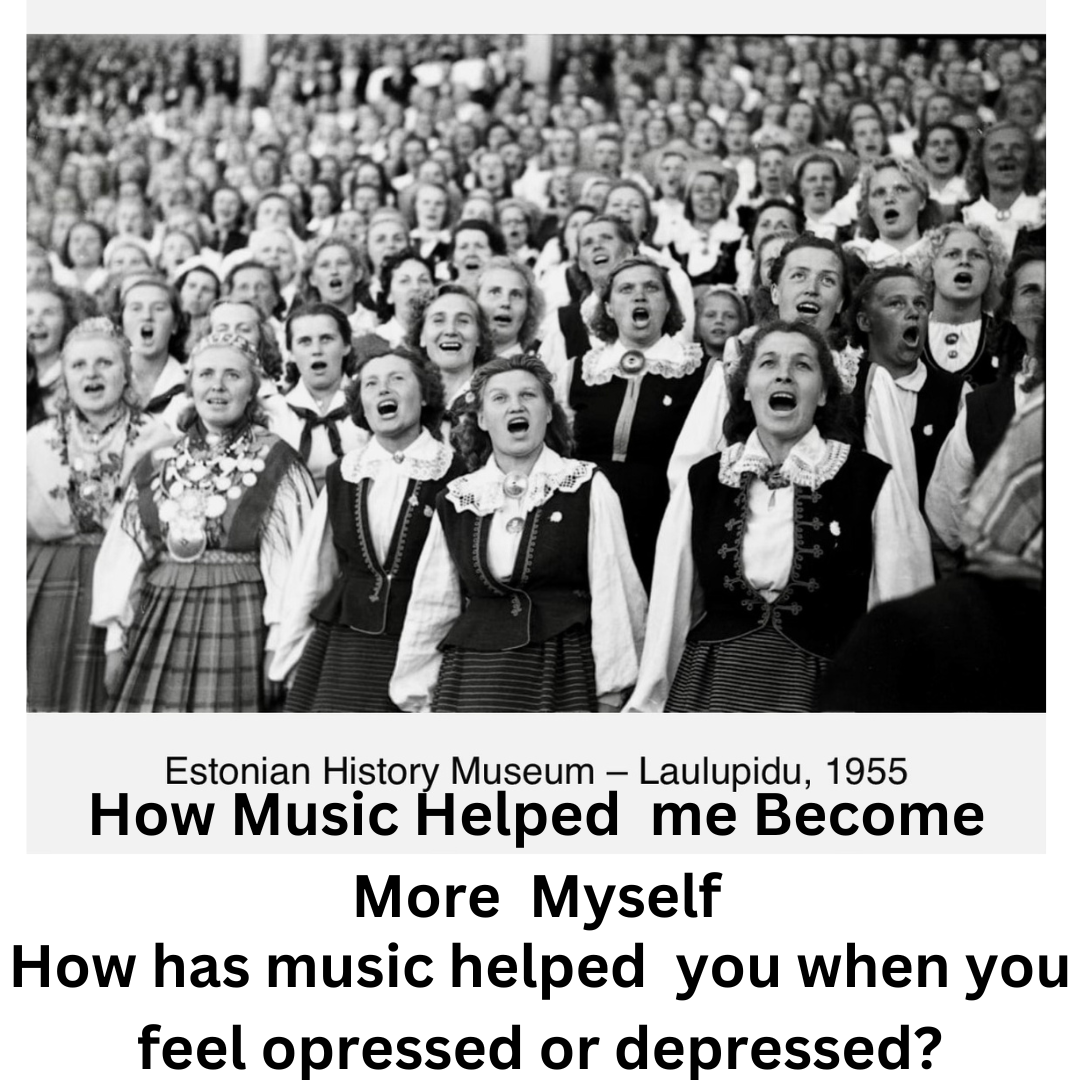
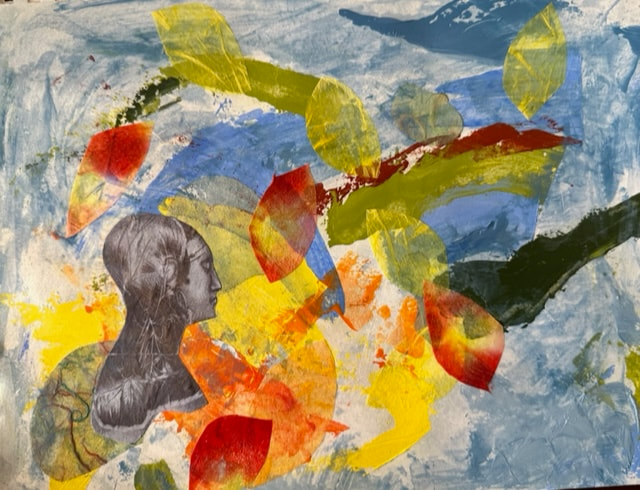
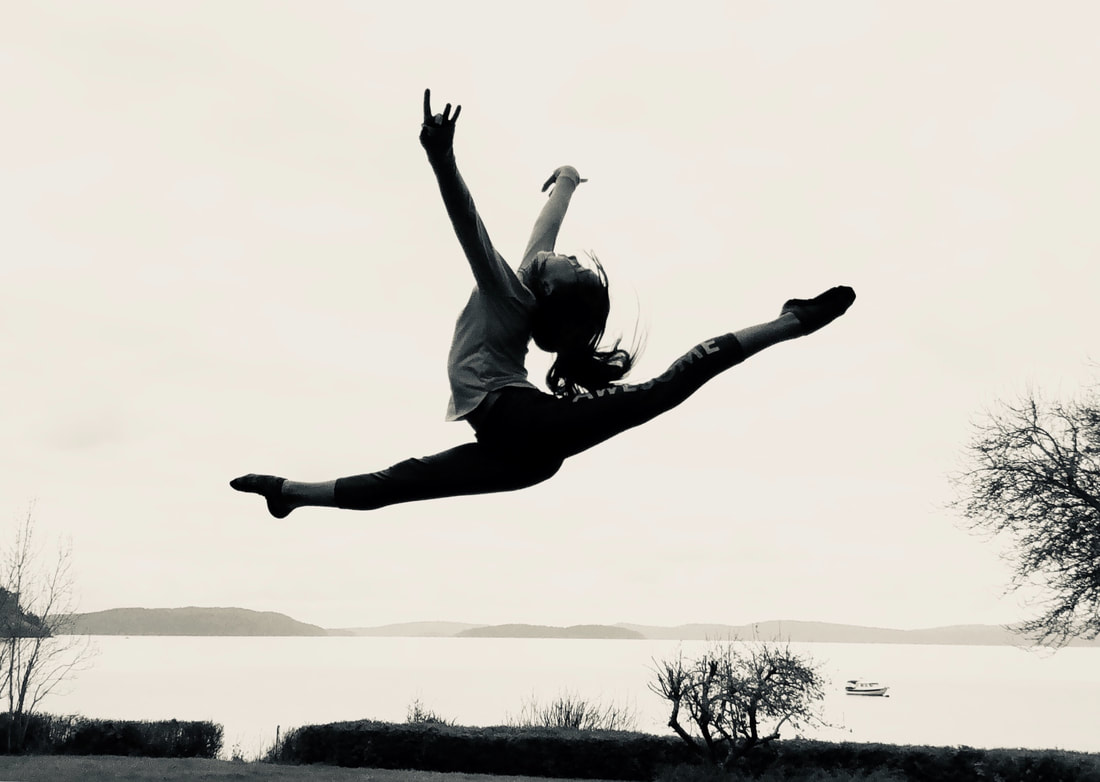
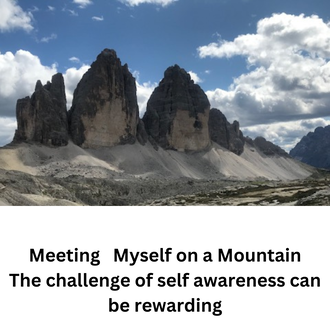
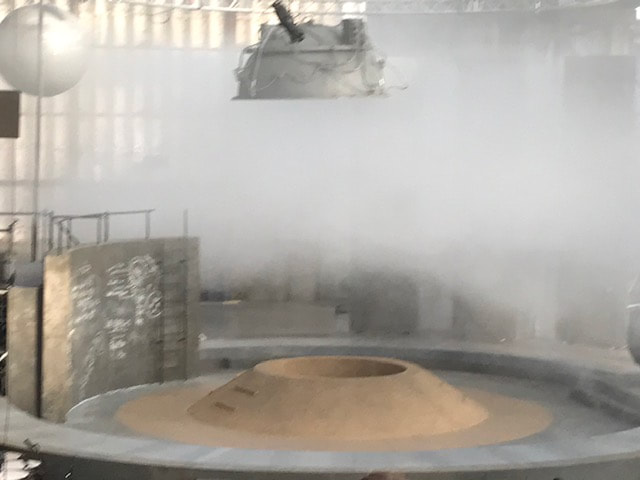
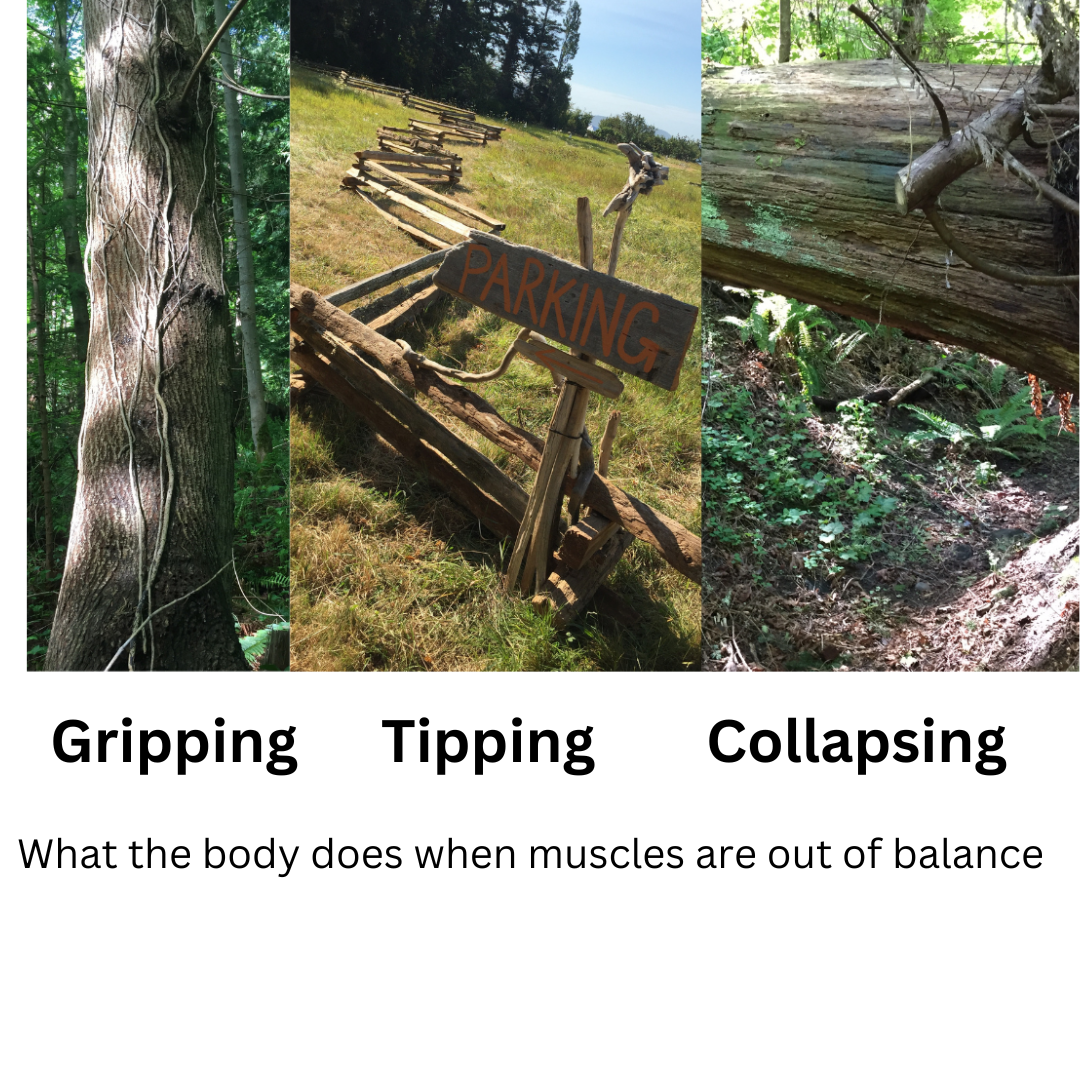
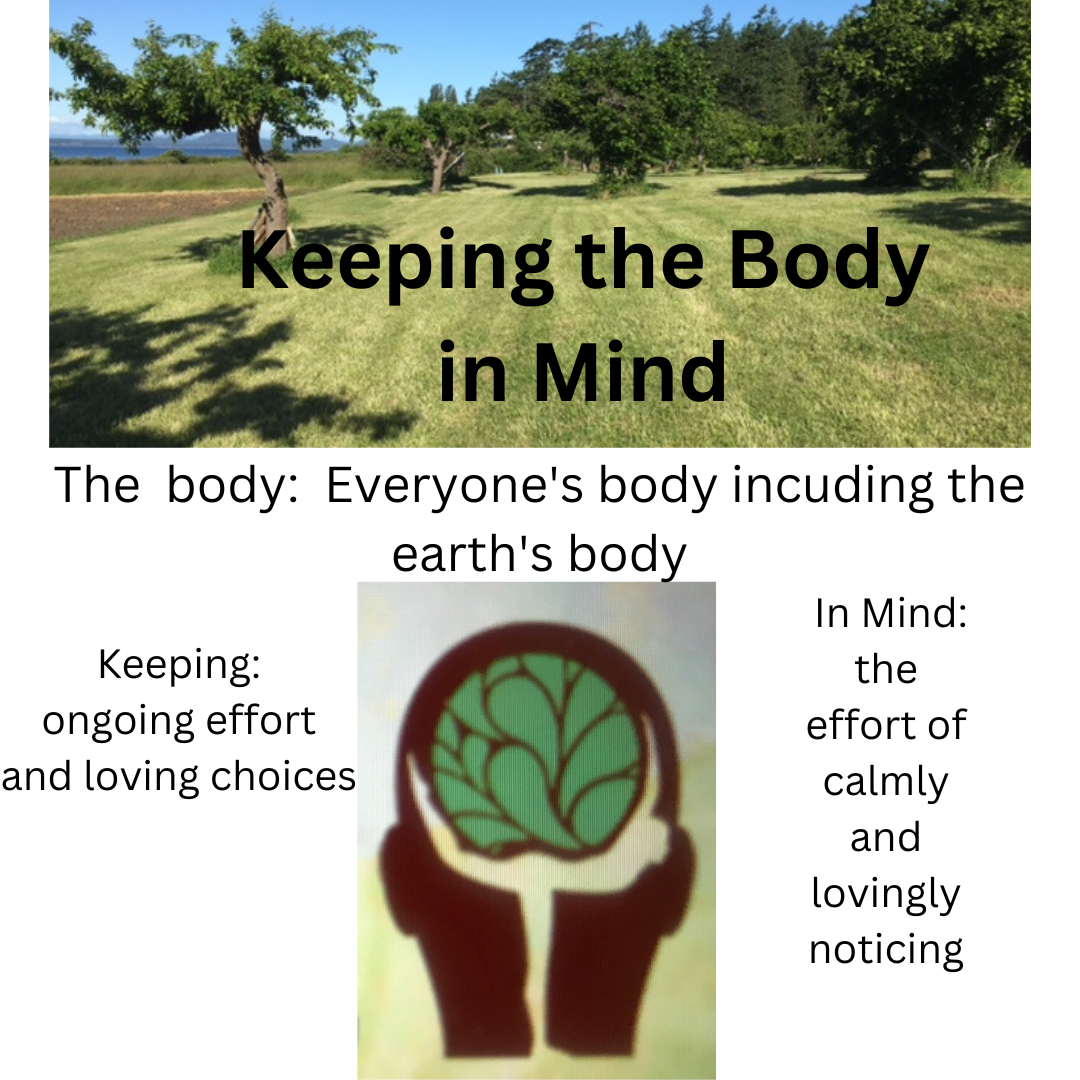
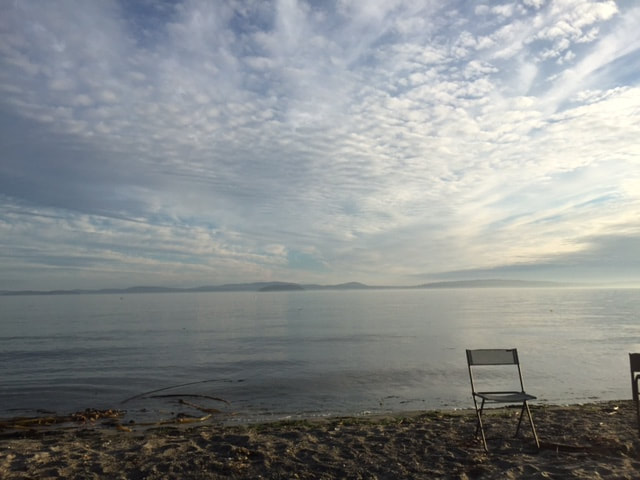
 RSS Feed
RSS Feed
